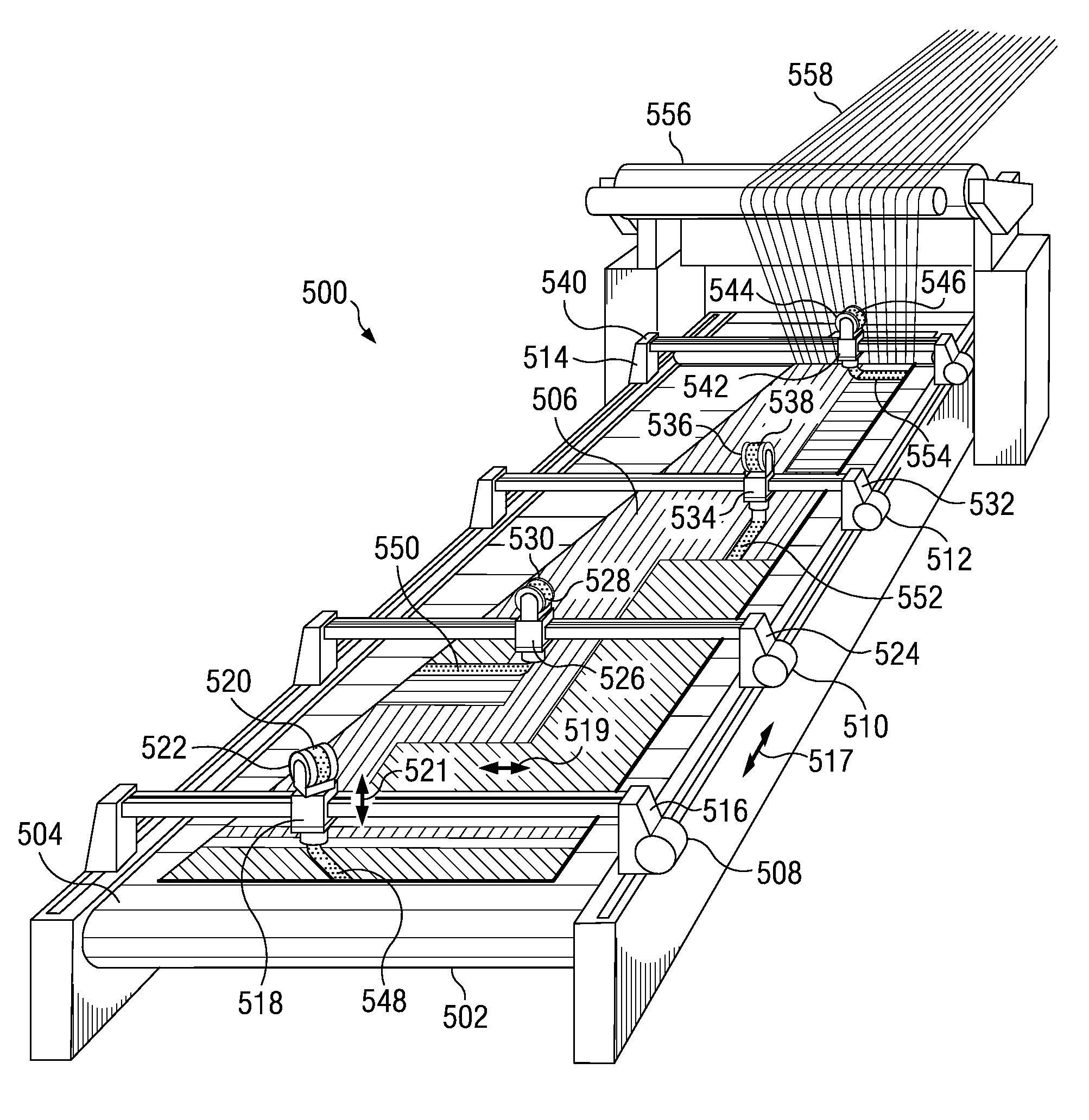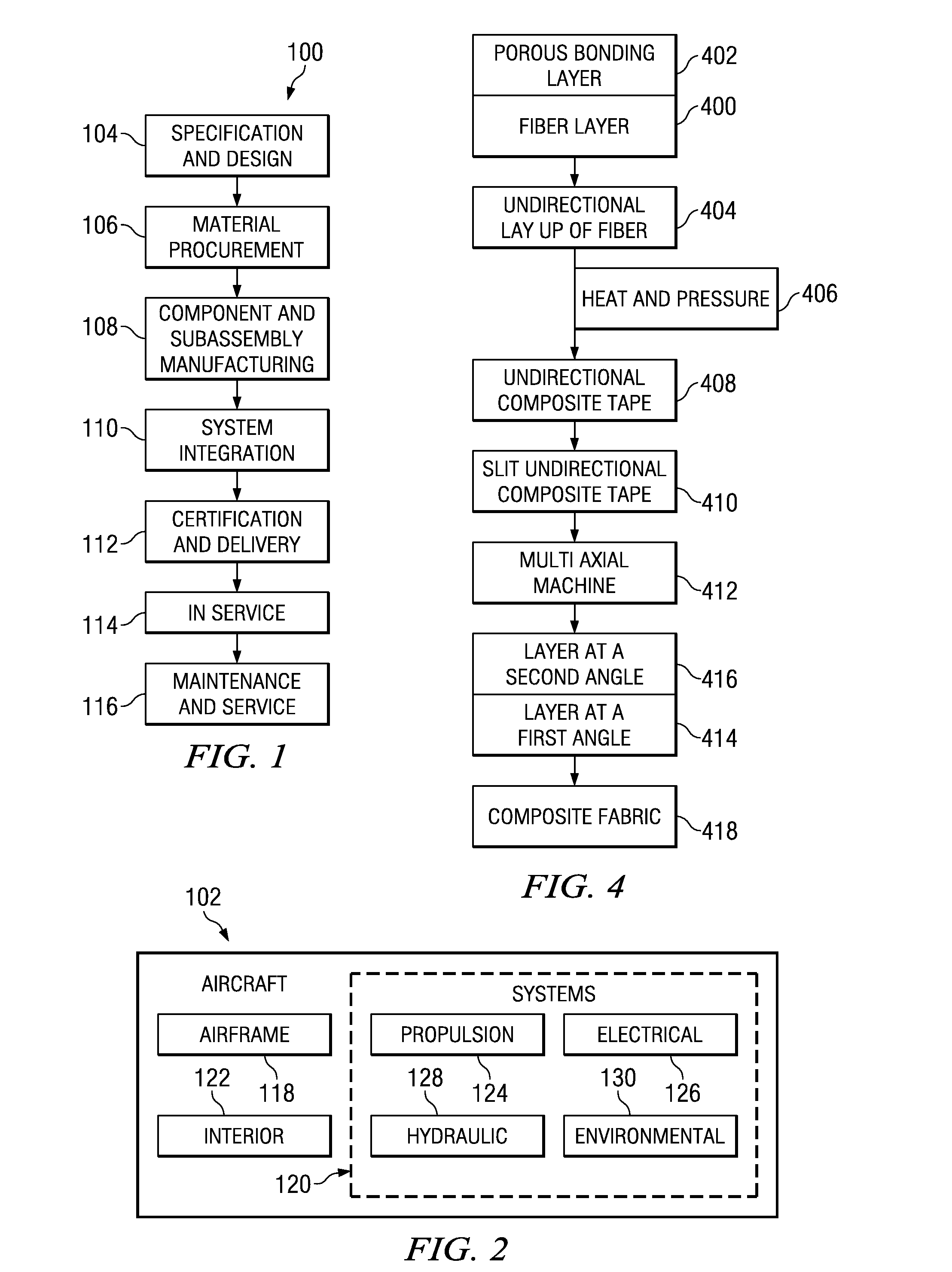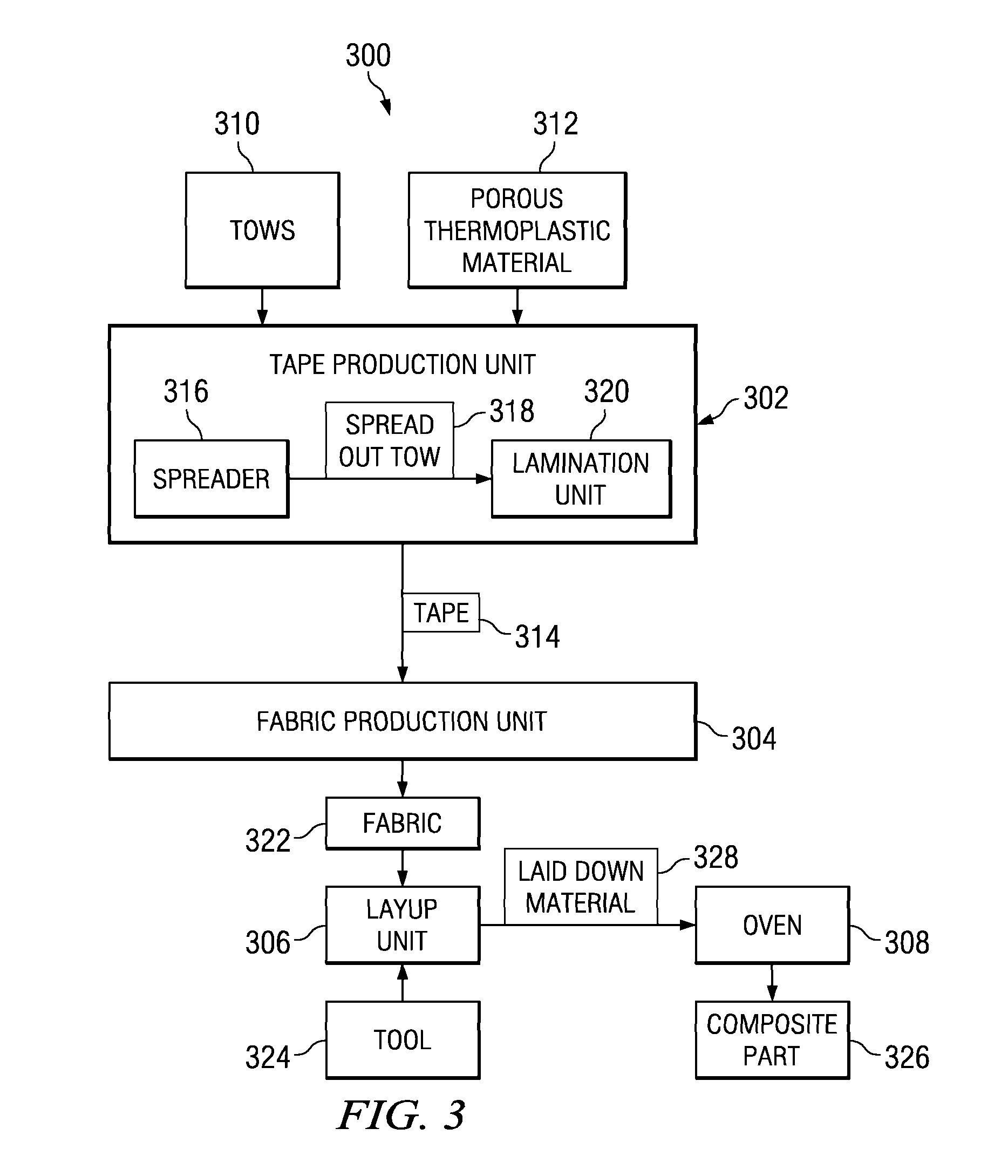Method and apparatus for low-bulk toughened fabrics for low-pressure molding processes
a low-pressure molding and fabric technology, applied in the field of non-crimped fabrics, can solve the problems of low bulk, fiber spreading, and inability to meet the requirements of low-pressure molding, and achieve the effects of reducing the number of raw materials
- Summary
- Abstract
- Description
- Claims
- Application Information
AI Technical Summary
Benefits of technology
Problems solved by technology
Method used
Image
Examples
Embodiment Construction
[0025]Referring more particularly to the drawings, embodiments of the disclosure may be described in the context of an aircraft manufacturing and service method 100 as shown in FIG. 1 and an aircraft 102 as shown in FIG. 2. During pre-production, exemplary method 100 may include specification and design 104 of the aircraft 102 and material procurement 106. During production, component and subassembly manufacturing 108 and system integration 110 of the aircraft 102 takes place. Thereafter, the aircraft 102 may go through certification and delivery 112 in order to be placed in service 114. While in service by a customer, the aircraft 102 is scheduled for routine maintenance and service 116 (which may also include modification, reconfiguration, refurbishment, and so on).
[0026]Each of the processes of method 100 may be performed or carried out by a system integrator, a third party, and / or an operator (e.g., a customer). For the purposes of this description, a system integrator may inclu...
PUM
| Property | Measurement | Unit |
|---|---|---|
| width | aaaaa | aaaaa |
| thickness | aaaaa | aaaaa |
| thickness | aaaaa | aaaaa |
Abstract
Description
Claims
Application Information
 Login to View More
Login to View More - R&D
- Intellectual Property
- Life Sciences
- Materials
- Tech Scout
- Unparalleled Data Quality
- Higher Quality Content
- 60% Fewer Hallucinations
Browse by: Latest US Patents, China's latest patents, Technical Efficacy Thesaurus, Application Domain, Technology Topic, Popular Technical Reports.
© 2025 PatSnap. All rights reserved.Legal|Privacy policy|Modern Slavery Act Transparency Statement|Sitemap|About US| Contact US: help@patsnap.com



